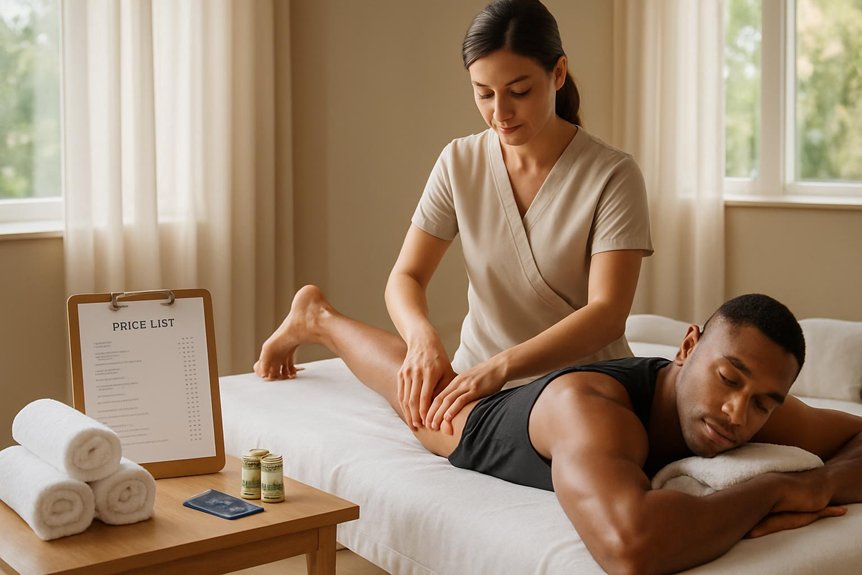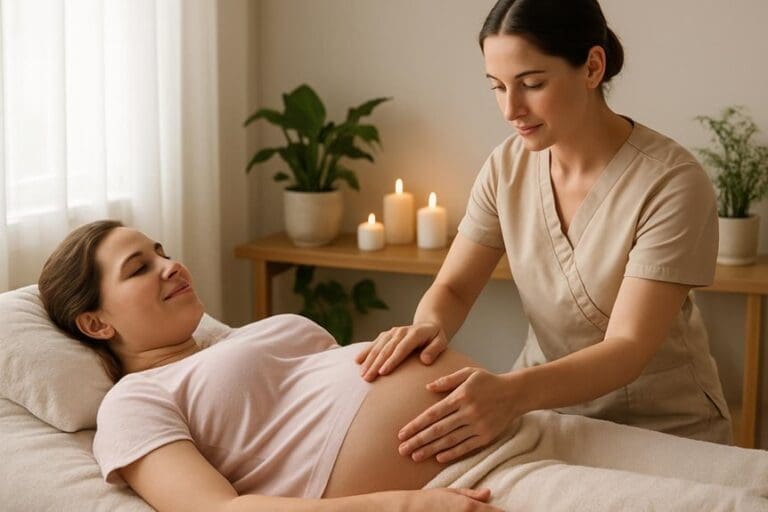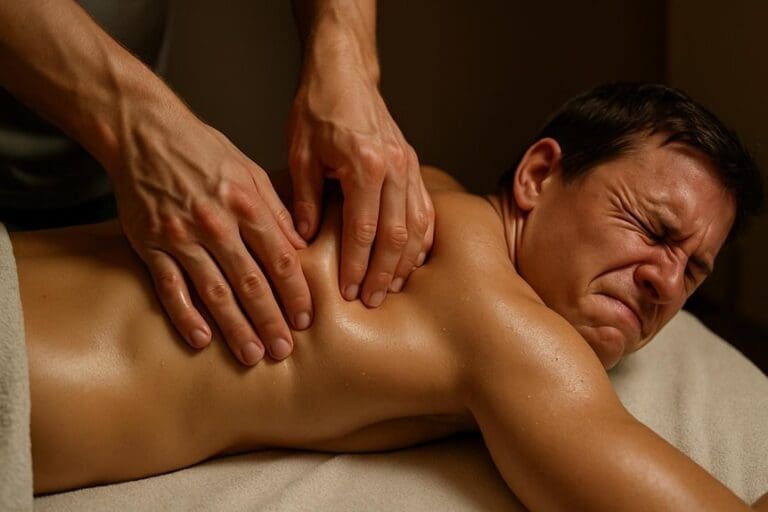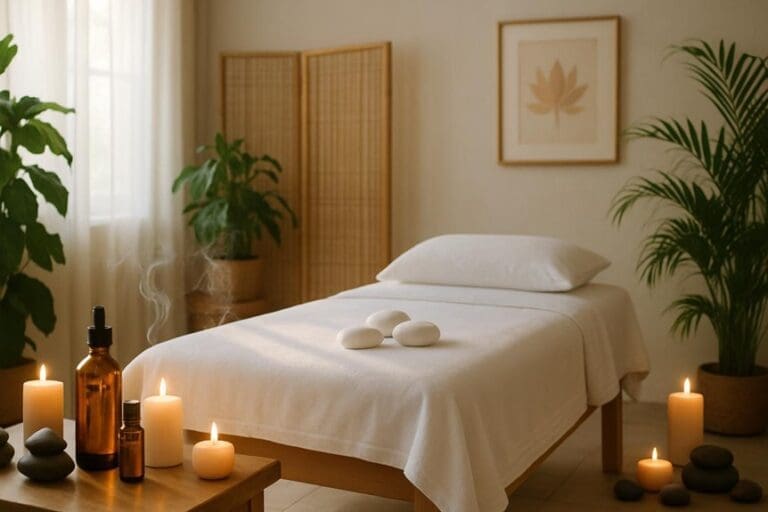In London, athletic massage typically costs £40–£55 for 30 minutes, £55–£70 for 45 minutes, £70–£90 for 60 minutes, and £85–£120 for 75–90 minutes. Rates vary by location, clinic standards, therapist qualifications, and session scope. Central areas and senior practitioners often charge more. Fees usually include assessment, targeted techniques, and brief aftercare advice. Savings may come via packages, memberships, off-peak bookings, or insurance reimbursement. Choosing the right duration depends on goals, complexity, and training load—further details clarify value and planning.
What Influences the Price of a Sports Massage
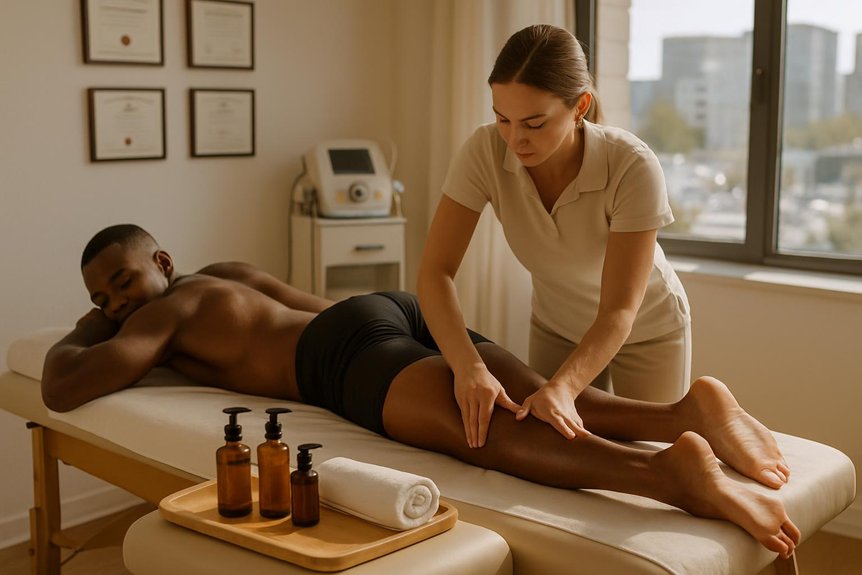
What drives the cost of a athletic massage? Location, therapist qualifications, session customisation, and operating standards are primary factors.
In London, neighbourhood overheads influence pricing; clinics in central or high-demand areas carry higher costs. Therapist expertise matters: advanced certifications in sports therapy, injury management, and myofascial techniques command a premium.
At Spa & Massage, pricing also reflects tailored assessment, targeted treatment planning, and focused techniques designed for performance and recovery.
Session complexity affects cost. Deep remedial work, assisted stretching, and specialised modalities require time and clinical precision.
Hygiene, premium oils, and continuous professional development add value and guarantee safety.
Demand and scheduling also play a role—peak times price differently.
Finally, integrated aftercare is costed in; our therapists provide personalised guidance on recovery routines, stretches, and pacing between sessions.
Some clinics may also incorporate complementary therapies such as the healing power of reflexology to enhance overall wellbeing and recovery, which can further influence the price.
Typical Price Ranges by Session Length
Typical athletic massage fees scale with session length, reflecting the time required for assessment and targeted work.
In London clinics like Spa & Massage, 30-minute appointments are priced for focused treatment.
60-minute sessions sit at the standard rate for extensive care.
90-minute bookings carry a premium for extended, multi-area work.
The following ranges outline what clients can expect to pay for each duration.
30-Minute Session Costs
A clear way to plan a athletic massage budget is to compare prices by session length, as costs scale with time and therapeutic depth.
In London, shorter appointments focus on one or two problem areas, while longer bookings allow thorough assessment, warm-up, targeted work, and measured recovery time.
From Spa & Massage’s perspective, the aim is to match minutes to goals so clients pay for the precision they need, not time they won’t use.
Typical ranges are as follows:
- 30 minutes: targeted relief, often for a single region.
- 45 minutes: two regions or one complex area with reassessment.
- 75–90 minutes: full-chain treatment, mobility testing, and corrective techniques.
Longer sessions generally deliver greater cumulative relief and durability, reducing follow-up frequency and total spend over a training block.
60-Minute Session Costs
Building on the focus-by-duration approach, Spa & Massage outlines clear price bands by minutes so clients can match budget to therapeutic scope.
Across London, short, targeted appointments typically cost less, while longer work accommodates layered techniques and recovery planning.
- 30 minutes: usually ideal for one problem area; expect a concise assessment and focused release. Typical range: £40–£55.
- 45 minutes: allows assessment plus adjacent structures; good for pre/post-event tune-ups. Typical range: £55–£70.
- 60 minutes: the most requested; permits full regional treatment and aftercare advice. Typical range: £70–£90.
- 75 minutes: deeper sequencing across multiple regions with measured intensity. Typical range: £85–£110.
At Spa & Massage clinics in Crouch End, Bayswater, Chiswick, Earl’s Court, Belsize Park, and Richmond, experienced therapists calibrate session length to goals, tolerance, and training load, keeping pricing transparent and outcomes personal.
90-Minute Session Costs
Minute-by-minute pricing helps clients match therapeutic scope to budget with clear expectations.
In London, typical athletic massage fees scale by session length: 30 minutes often falls in a focused recovery range, 45 minutes suits one major area plus surrounding tissues, 60 minutes supports full-limb or back-and-hips work, and 90 minutes allows detailed assessment, corrective techniques, and unhurried integration.
From Spa & Massage’s perspective, clients generally invest £40–£55 for 30 minutes, £55–£70 for 45 minutes, £70–£90 for 60 minutes, and £95–£120 for 90 minutes, depending on therapist seniority and clinic location.
Longer sessions reduce per-minute cost and improve outcomes when complex issues—ITB tightness, hamstring strain, capsular restrictions—require layered techniques.
Therapists at Spa & Massage guide clients to the minimum effective duration, protecting both progress and budget.
Location and Clinic Setting: How They Affect Cost
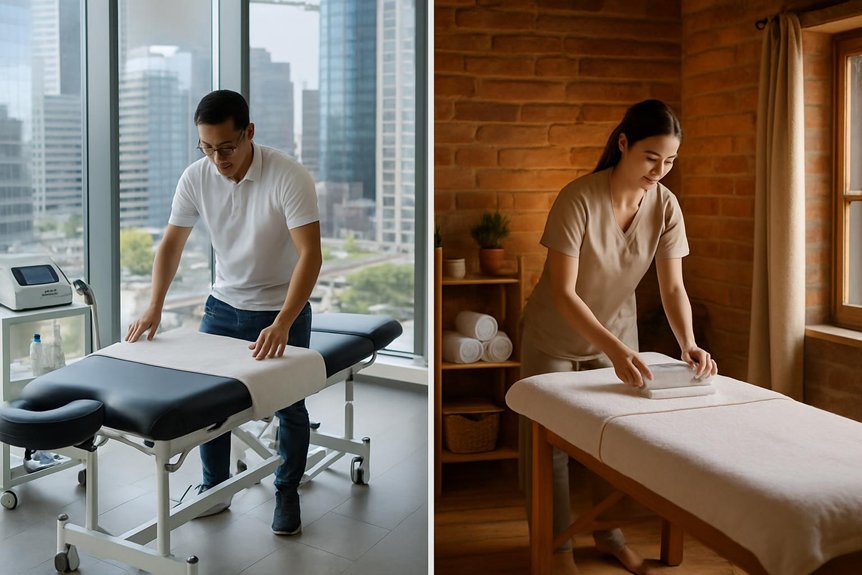
While the therapist’s skill drives therapeutic outcomes, geography and clinic environment strongly influence what clients pay for athletic massage in London. Rents, business rates, and transport links push prices higher in central or high-demand neighbourhoods. Conversely, outer zones can offer more accessible fees.
Clinic design also matters: dedicated treatment rooms, premium linens, and extended opening hours add operational costs that are reflected in rates.
From Spa & Massage’s perspective, transparent pricing across Crouch End, Bayswater, Chiswick, Earl’s Court, Belsize Park, and Richmond aligns fees with local overheads while maintaining consistent clinical standards.
Clients value reliable amenities—punctual appointments, quiet rooms, and professional-grade oils—because comfort supports therapeutic depth.
Proximity reduces travel time and post-session strain, often justifying a modest premium when regular recovery work is required.
Experience Level of the Therapist and Pricing
Experience tends to be the clearest driver of therapist-related pricing, reflecting advanced assessment skills, refined technique, and consistent outcomes. Providers commonly tier rates by qualifications and years in practice: newly qualified therapists are priced more accessibly; senior practitioners and specialists command higher fees due to greater diagnostic accuracy and efficiency under pressure.
At Spa & Massage clinics in London, pricing reflects measurable expertise—postgraduate training in athletic massage, evidence-based protocols, and a record of client results. Clients with complex presentations, event deadlines, or recurring injuries often choose senior therapists for targeted progression and fewer total sessions.
Those seeking maintenance or first-time care may select standard rates without sacrificing safety or professionalism. Transparent profiles, clear scopes of practice, and outcome-focused booking guidance help clients match budget to therapeutic need.
What’s Included in the Fee: Assessment, Techniques, and Aftercare
A typical athletic massage fee at Spa & Massage covers a structured initial assessment (history, movement screening, and goal-setting).
In our clinics, therapists select methods such as deep tissue, myofascial release, trigger point work, and assisted stretching to match tissue needs and training loads.
The assessment is followed by evidence-based manual techniques tailored to the findings.
Aftercare guidance is also provided, which commonly includes load management advice, simple mobility or strengthening drills, hydration and recovery tips, and when appropriate, a follow-up plan.
Initial Assessment Scope
An initial athletic massage appointment at Spa & Massage includes a focused assessment, targeted treatment, and clear aftercare guidance within a single fee.
The assessment is concise yet thorough: brief health history, discussion of goals, review of training load, and red-flag screening.
Therapists then perform posture observation, palpation, and range-of-motion checks for the neck, shoulders, spine, hips, and key lower-limb structures. Where relevant, they use simple functional tests to identify irritation, restriction, or compensatory patterns.
This structured intake guarantees the treatment plan is precise and time-efficient, avoiding unnecessary techniques.
Clients can expect transparent communication about priority areas, anticipated response, and realistic session outcomes.
Spa & Massage emphasises safety, consent, and comfort, adapting pressure and positioning discreetly.
The result is a clinically informed, personalised session aligned with performance, recovery, and ease.
Techniques and Aftercare
Why do effective athletic massage results hinge on both precise techniques and disciplined aftercare? Because outcomes follow a chain: informed assessment, targeted methods, and consistent recovery behaviors.
In Spa & Massage clinics, therapists apply evidence-based techniques—myofascial release to reduce fascial tension, deep tissue and trigger point work to modulate nociception, and active/passive stretching to restore range. Pressure is dosed to tissue tolerance; pace and direction follow fibre orientation to optimise perfusion and glide.
Aftercare is included in the fee because adaptation happens between sessions. Our therapists recommend hydration to support metabolite clearance, gentle mobility within 24 hours, and heat or cold based on irritability.
Self-massage with a tennis ball or foam roller is demonstrated. For sensitive tissue, we propose 24–48 hours of load modification, then graded return, with optional follow-up to refine the plan.
Package Deals, Memberships, and Ways to Save
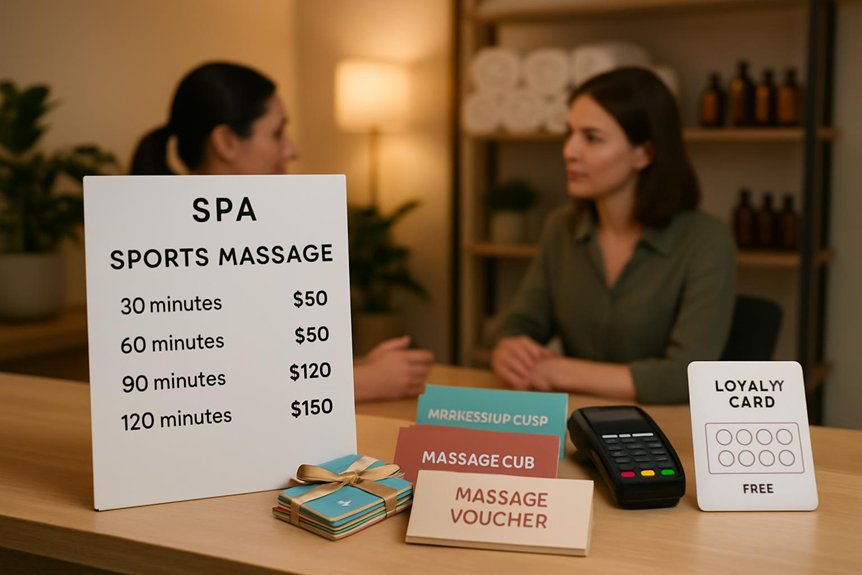
Curiously, the most reliable way to keep athletic massage affordable is to plan ahead with structured savings options. Evidence suggests that consistent treatment delivers better outcomes and lower long‑term costs. Therefore, securing regular sessions at a preferential rate is pragmatic as well as comforting.
At Spa & Massage, clients often reduce per‑session costs through multi‑session packages and flexible memberships. Packages suit those preparing for events or managing a training block; memberships benefit individuals needing maintenance across seasons.
Booking off‑peak slots, opting for slightly longer intervals once acute issues settle, and combining shorter “tune‑ups” with periodic full sessions can stretch budgets without compromising care.
Therapists advise setting a realistic monthly cadence—often every two to four weeks—then choosing the package tier that matches that rhythm, preserving both progress and savings.
Private Health Insurance and Employer Wellbeing Schemes
Beyond packages and memberships, another way to contain out‑of‑pocket costs is to use private health insurance or employer wellbeing benefits where available.
Many UK policies reimburse part of a athletic massage when it is provided by a recognised therapist and accompanied by an invoice. Clients should check eligibility criteria—approved practitioner status, treatment purpose (injury prevention or rehabilitation), session length caps, and annual limits.
From Spa & Massage’s perspective, clarity makes claiming easier. Clinics issue itemised receipts with therapist credentials and session details, and can note treatment goals when appropriate.
Some employers offer wellness allowances, salary‑sacrifice schemes, or prepaid platforms that cover massage; staff typically submit receipts or book via a listed portal.
Verifying requirements before booking helps align expectations, maximise reimbursement, and keep care consistent with personal training or physiotherapy plans.
Choosing the Right Session Length for Your Goals
Thirty, sixty, and ninety minutes each serve distinct objectives in athletic massage, and selecting the right duration depends on the client’s condition, training load, and treatment goals.
At Spa & Massage, therapists match session length to clinical need. Thirty minutes suits targeted work on a single region—calf strain, shoulder restriction, or pre/post-event flush—where focused techniques like friction, stripping, and METs can be delivered precisely.
Sixty minutes allows a balanced approach: assessment, regional treatment, and integration across related chains (e.g., hips–hamstrings–calves) to improve mechanics and recovery.
Ninety minutes is reserved for complex presentations or heavy training blocks, enabling extensive myofascial work, joint mobilisations, and nervous system downregulation.
Clients are guided to the shortest effective dose, reviewed session to session for measurable progress.
How to Get the Best Value From Your Athletic Massage Session
While price matters, value in a athletic massage is determined by outcomes: clear goals, efficient use of time, and sustained benefits between sessions. Clients gain most when objectives are shared at booking—injury recovery, pre-event priming, or mobility work—so therapists can prioritise regions that change performance.
At Spa & Massage clinics in London, therapists assess posture, range of motion, and tissue quality to target high-yield techniques, including focused deep tissue and myofascial release.
Value grows with preparation and aftercare. Arriving hydrated, warmed up, and on time preserves hands-on minutes; post-session, our therapists recommend gentle mobility, contrast showers, and spacing follow-ups according to training blocks. Many clients choose packages to secure continuity and reduce per-session costs.
Clear home advice, concise sessions, and measurable progress deliver the best return.
Conclusion
In the end, pricing is a compass, not a gatekeeper. Like a seasoned runner choosing the right stride for the terrain, the informed client aligns session length, therapist expertise, and clinic setting with clear goals. Transparent fees, package options, and memberships are sturdy waymarkers, while assessment and aftercare are the well-packed rucksack. In London’s varied landscape, value emerges where skill, intention, and evidence meet—guiding each person toward recovery, resilience, and performance without losing sight of budget or quality.
